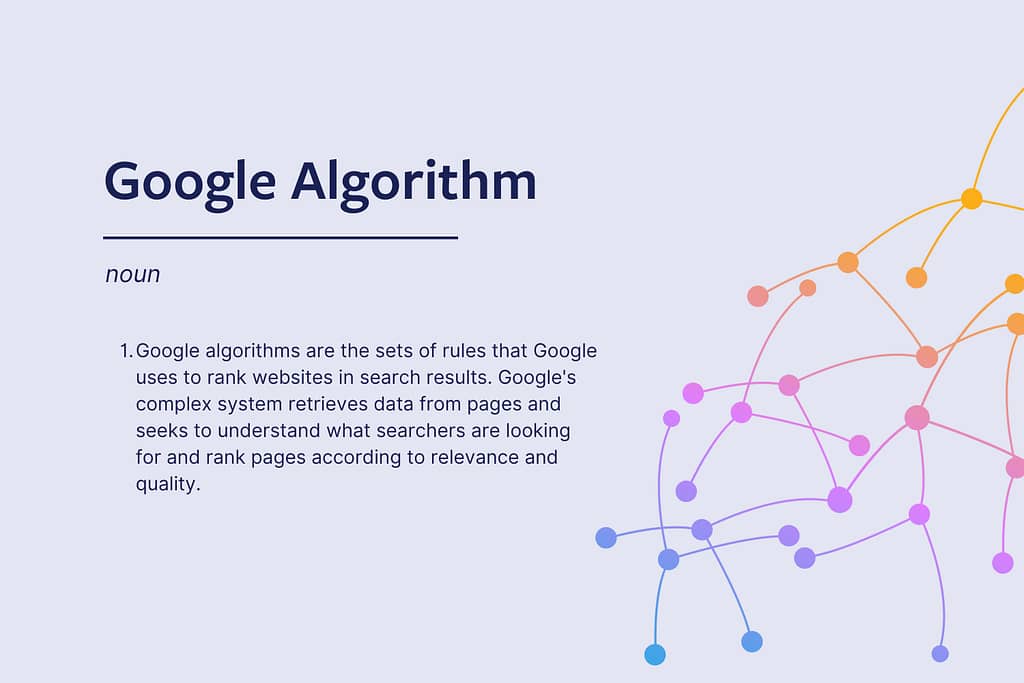
Key Takeaways
- Google’s Constant Evolution: Google continuously improves its algorithm to enhance the user experience, making frequent tweaks and major updates over the years.
- Significant Updates from 2003-2023:
- Florida (2003): Improved search quality by penalising spammy link-building tactics.
- Big Daddy (2004): Enhanced search results by penalising low-quality content.
- Jagger (2005): Improved relevance by considering user location and search history.
- Vince (2006): Increased search result speed by caching more pages.
- Caffeine (2009): Overhauled search infrastructure for faster and more accurate results.
- Panda (2011): Targeted low-quality content, emphasising quality and user relevance.
- Venice (2012): Improved local search and introduced local hybrid results.
- Penguin (2012): Targeted spammy backlinks, encouraging natural link building.
- Hummingbird (2013): Focused on understanding search query context and quality content.
- Pigeon (2014): Enhanced local SEO, prioritising relevance to user location.
- HTTPS/SSL (2014): Gave ranking boost to secure websites using HTTPS.
- Mobile Update (2015): Gave ranking boost to mobile-friendly websites.
- RankBrain (2015): Utilised machine learning to understand user search intent.
- Intrusive Interstitials (2017): Penalised large, obstructive pop-ups for better usability.
- Fred (2017): Targeted low-quality, ad-heavy sites with thin content.
- Mobile Page Speed Update (2018): Favoured fast-loading mobile websites.
- BERT (2019): Utilised machine learning to understand context and user intent.
- Core Algorithm Update (2021): Introduced Core Web Vitals for website speed.
- Core Algorithm Updates (2023 and beyond): Focuses on quality content and adherence to E.E.A.T. guidelines.
- Current SEO Emphasis: Quality content remains a central focus in SEO as Google’s algorithm becomes more adept at detecting relevance, helpfulness, and informativeness.
- Ongoing SEO Challenges: Google’s algorithm updates can significantly impact website rankings, and there is no one-size-fits-all solution for recovery. Adapting to algorithm changes and focusing on creating high-quality content is key for long-term success in SEO.
Google’s Biggest Updates from 2003-2011
Google has come a long way in the past 10 years, but the search engine has been around for much longer than that.
Sure, it wasn’t always as powerful as it is now, but Google has been working hard to provide a smarter search experience for decades. So, before we get into the recent updates, we’re going to take a peek at big updates that occurred between 2003-2011:
- Florida (2003): According to Search Engine Land, Florida was named after the city where Brett Tabke’s PubCon conference is located. It was the first major update to Google’s algorithm in several years (Google went live in 1998), and it had a huge impact on the search landscape. This update improved the quality of results by penalising websites that engaged in spammy or manipulative link building.
- Big Daddy (2004): Nope, Big Daddy was not named after the Adam Sandler comedy masterpiece. The origins of the name remain a mystery, but it refined Google’s spam detection. Big Daddy improved the quality of search results by penalising websites with low-quality content or content that wasn’t relevant to the user’s query.
- Jagger (2005): Jagger improved the relevance of search results by considering the user’s location and search history. This update also penalised websites that were not mobile-friendly.
- Vince (2006): The Vince update improved the speed of Google’s search results by caching more pages in its index. This update improved the speed of Google’s search results, especially for queries that were frequently searched.
- Caffeine (2009): Caffeine was a major overhaul of Google’s search engine infrastructure. It resulted in faster and more accurate search results.
These are just a few of the updates Google has released over the years. Google constantly updates its algorithm in order to improve the quality of the platform. As a result, SEO practitioners need to stay up-to-date on the latest changes to ensure their websites rank well, even as things shift.
Google’s Biggest Updates from 2011-2023
Increasing demand for quality results saw Google throw themselves into improving the user search experience. In 2011, Google started rolling out major changes, many of which were later integrated into the Core Algorithm.
While Google has come a long way since 2011, you can see that some core SEO principles date all the way back to their earliest updates.
2011 Panda
Google developed the Panda update to combat low-quality websites with bad content and a bad user experience. The first version of Panda was released in February 2011, and it was followed by several data refreshes over the next two years.
The Panda update uses a few key signals to identify quality content, including:
- The number of words on a page
- The uniqueness of the content
- The quality of the writing
- The relevance of the content to the user’s query
Sites with low-quality content are penalised by the Panda update. This forced SEO practitioners to focus on content that’s meaningful to the user, rather than pandering to Google’s algorithm. This also combatted old-school Black Hat SEO tactics like keyword stuffing.
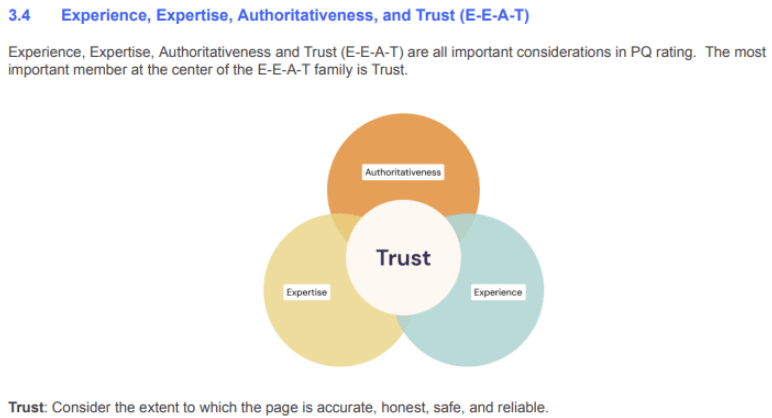
The Panda update was effective in improving the quality of search results. Google credits the update with helping to remove many low-quality sites from the top of the rankings.
In 2015, Google incorporated the Panda algorithm into its core algorithm, which means it’s now applied to all search results. This has made it difficult for low-quality sites to game the system.
2012 Venice
The Venice update was released in February of 2012. The update improved local search and had a big impact on the way results were displayed.
Before the Venice Update, Google would display a list of ten links in response to a search query. The Venice update introduced a new type of search result, called a “local hybrid result.”
Local hybrid results are a combination of a link and a Google Maps listing. They were displayed for search queries with local intent, such as “restaurants near me” or “best hotels in Brisbane.”
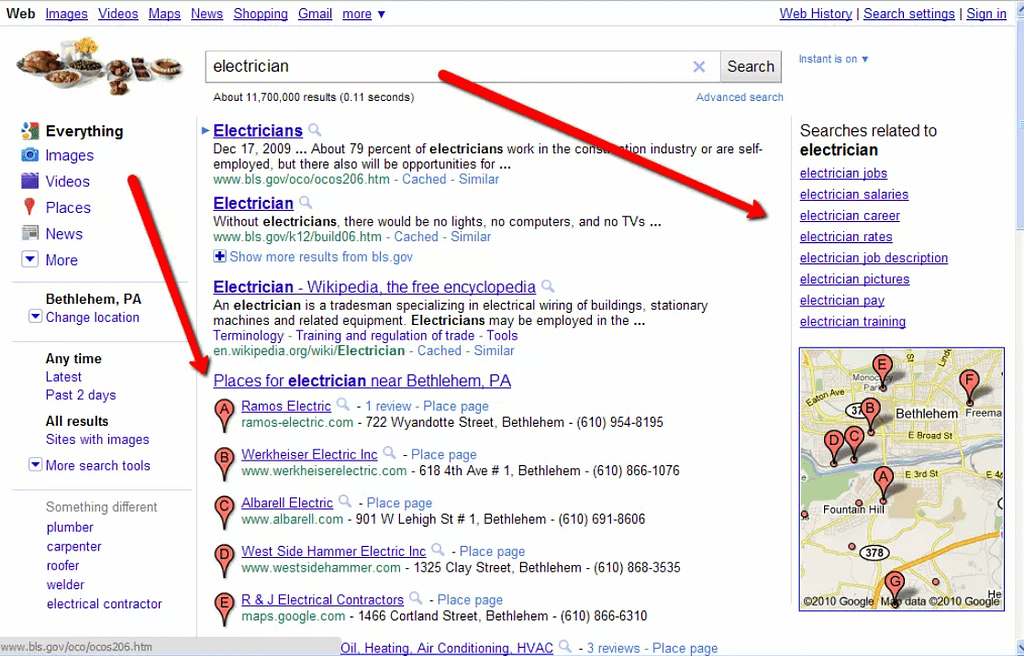
The Venice update also changed the way Google ranks local search results. Google now takes into account the user’s location, the relevance of the business to the search query, and the business’ reputation.
The Venice update changed the way local businesses are found online. Businesses need to make sure their website is optimised for local search and that they have a good reputation online.
2012 Penguin
The Google Penguin update was released in April 2012. It targeted spam, specifically Black Hat link building tactics. The Penguin update used a variety of signals to identify spammy backlinks, such as:
- Backlinks from low-quality websites
- Unnatural distribution of backlinks
- Spammy anchor text
Sites with spammy backlinks are penalised by the Penguin update. This forced SEOs to build natural backlinks through legitimate means, such as guest blogging and social media sharing.

Black Hat SEO was strongly targeted by the Penguin update.
Manipulative link building tactics (such as buying backlinks or participating in link exchanges) no longer worked. The Penguin update was a major success in reducing the amount of spam in Google’s search results.
2013 Hummingbird
The Google Hummingbird update was released in August 2013. The Hummingbird update improved the way Google understands the meaning behind a search query.
Previously, Google would focus on the individual words in a query. This often led to search results that weren’t helpful to users. To combat this, the Hummingbird update considers the context of the query and the meaning of the words as a whole.
The Hummingbird update also reinforced the Panda update, which was designed to reduce low-quality content. Hummingbird made it more important for websites to create quality content that’s relevant to the user. This means websites need to focus on creating content that is readable, uses natural language and makes use of semantic keywords (rather than keyword stuffing).
Hummingbird is still in effect today, and it’s constantly updated to improve the way Google understands searches.
2014 Pigeon
The Google Pigeon update focused on local SEO. It affected both the search engine results page (SERP) and Google Maps. The update was released in July 2014 and was named after a pigeon because they’re known for their homing ability.
The Pigeon update was designed to close the gap between Google’s web algorithm and Google’s local search algorithm. Google would now show results that were more relevant to the user’s location. For example, if a user searched for “sushi near me,” Google would show results for sushi restaurants near the user’s current location.
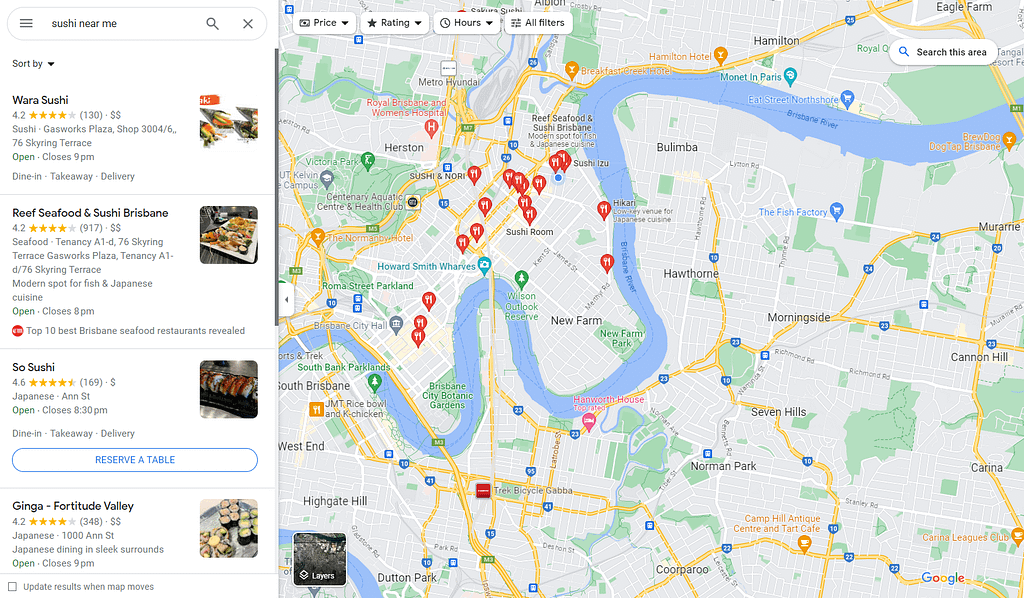
The Pigeon update had a huge impact on the local search community. It made it easier for small businesses to reach new audiences. But it also meant SEOs had to take a more localised approach to strategies.
SEOs would now have to ensure their website conveyed the business’ locality, gained local reviews, and implemented structured data markup so they could be found through local searches.
2014 HTTPS/SSL
In August 2014, Google announced it would give a small ranking boost to websites that used HTTPS (Hypertext Transfer Protocol Secure).
HTTPS is a secure version of HTTP that encrypts the data sent between a user’s browser and a website. This makes it more difficult for hackers to intercept and steal personal information, like passwords and credit card numbers.

Google’s decision to give a ranking boost to HTTPS websites was a major step towards making the web secure. It also encouraged more websites to switch to HTTPS.
The HTTPS ranking boost was initially a “lightweight” signal, meaning it only had a small impact on a website’s ranking. Google has since increased the weight it gives to websites using HTTPS.
Some factors to consider regarding the HTTPS/SSL update:
- Google still looks at the quality of the content, the number of backlinks and the user experience.
- It applies to websites that use HTTPS for all pages. Websites that only use HTTPS for some pages do not receive the ranking boost.
- Not guaranteed to improve a website’s ranking.
2015 Mobile Update
By 2015, more than 50% of Google’s searches were from mobile devices. This led to the Mobile update which gave a rankings boost to mobile-friendly websites.
The Mobile update was the first major algorithm update to specifically target mobile search results. It acknowledged the growing importance of mobile devices in the search landscape.

This update was met with mixed reactions from the SEO community. Some welcomed the update. It gave a clear incentive to make websites mobile-friendly. Others were concerned the update would penalise websites that were not mobile-friendly, even if they were high quality.
Rankings changes were based on the website’s mobile usability, the mobile-friendliness of content, and the mobile-friendliness of backlinks. For example, websites that were difficult to use on mobile devices were penalised by the Mobile update.
The Mobile update didn’t have the dramatic effect some SEOs predicted. But it did impact the way websites are optimised for search. Today, it’s essential for all websites to be mobile-friendly in order to rank well.
The Google Mobile update is still active today. It’s constantly refined to stay at the forefront of the latest changes in mobile search behaviour.
2015 RankBrain
RankBrain is a machine learning algorithm introduced by Google in 2015. It’s designed to understand the intent behind a user’s search query.
It understands intent by looking at the words used in the query, the user’s location and the user’s search history. It also uses machine learning to analyse past searches and how users interact with search results.
RankBrain is one of Google’s most important ranking signals. There are a few things SEOs can do to optimise their websites for RankBrain, including:
- Creating high-quality content that’s relevant to the user’s search intent
- Using clear and concise language in title tags and meta descriptions
- Building links with other high-quality websites
- Optimising the website for mobile devices
RankBrain has a significant impact on the way that Google ranks websites. It’s not the only ranking signal that Google uses, but it’s one of the most important.
2017 Intrusive Interstitials
The Pop-Up Penalty was announced by Google in January 2017. The algorithm update discouraged large pop-ups that made it difficult for users to navigate a website.
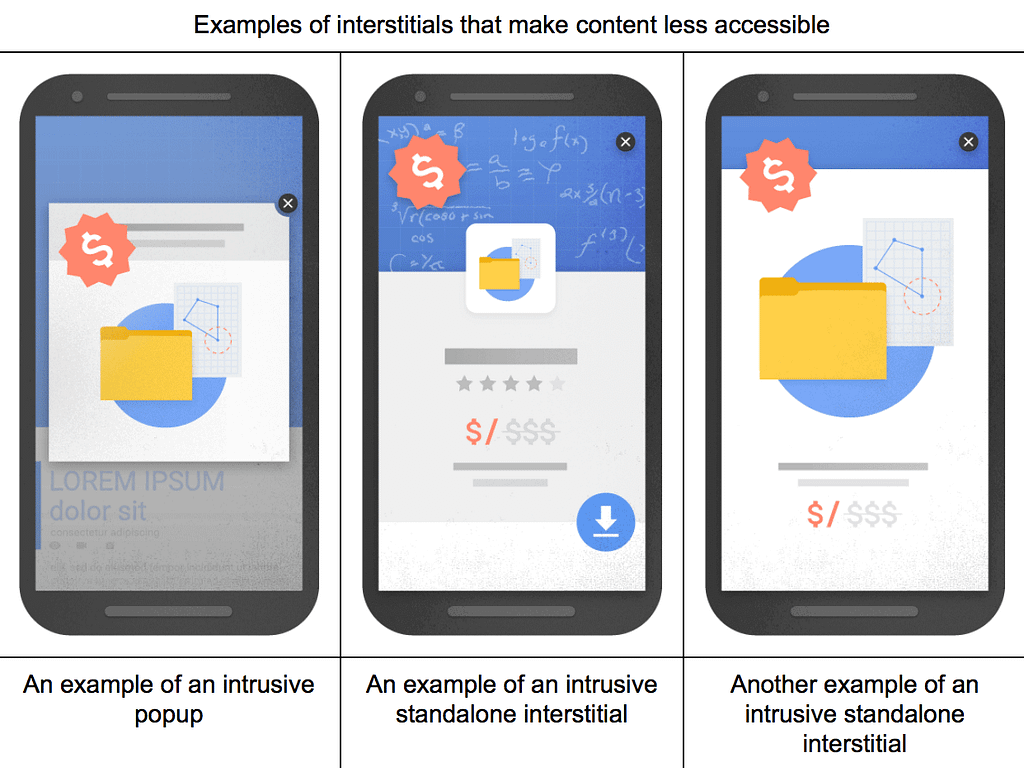
The Pop-Up Penalty was based on the size of the pop-up, the frequency it appeared and the user’s ability to close it.
Websites that had large pop-ups that were difficult to close were penalised. Some SEOs were concerned it would penalise legitimate pop-ups used to display information or collect email addresses. That wasn’t the case, and the Pop-Up Penalty was a serious win for the usability of websites.
2017 Fred
The Fred update was a series of updates that occurred in March of 2017. While Google was vague about what they were targeting, SEOs determined that Fred primarily affected low-quality, ad-heavy sites with thin content and bad backlinks.
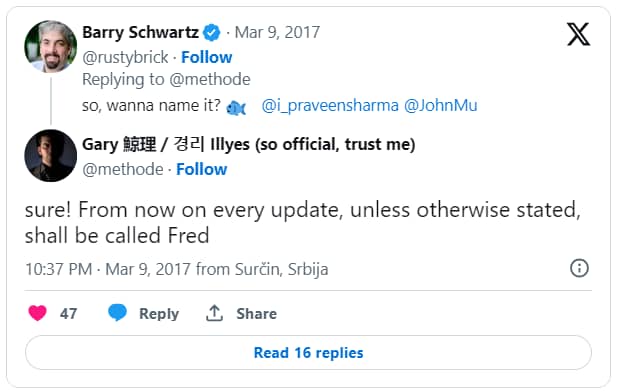
The Fred update was designed to improve the quality of Google’s search results by making it difficult for low-quality sites to rank well.
Google’s Webmaster Guidelines specifically state that sites should avoid having too many ads, thin content and low-quality backlinks. The Fred update was a way for Google to enforce these guidelines and ensure users get the best possible results.
2018 Mobile Page Speed Update
In January 2018, Google announced it would favour websites with fast mobile page speeds. This update was part of Google’s “speed up the internet” and “mobile-first initiatives.”
The Mobile Page Speed update is based on Google’s PageSpeed Insights tool, which measures the loading speed of a website on mobile devices. Websites that load quickly are rewarded with a higher ranking in mobile search results. Websites that load slowly may be penalised.
This is a significant development in the evolution of Google’s search algorithm. It ensures users have a positive experience when they search for information on mobile.
There are a number of things that website owners can do to improve the mobile page speed of their websites, including:
- Compressing images and media files
- Using a content delivery network (CDN)
- Minifying and combining CSS and JavaScript files
- Avoiding excessive plugins and scripts
- Optimising the website’s code
2019 BERT
BERT stands for Bidirectional Encoder Representations from Transformers. It’s a machine learning strategy implemented by Google in 2018.
BERT is designed to understand the context of a word or phrase by looking at the words surrounding it. This contrasts traditional machine learning algorithms, which only look at the words one by one.
The BERT update has been effective for understanding the intent of a search query. In fact, Google has said BERT is one of the biggest changes to their search algorithm in the last five years.
The introduction of BERT has had a big impact on SEO. Industry professionals now need to focus on creating content that’s relevant to the user’s intent, rather than just stuffing keywords wherever they fit. SEOs also need to make sure their content is well-written and easy to understand.
2021 Core Algorithm Update
Building on their “speed up the internet initiative,” Google announced an algorithm update which included new ranking signals called Core Web Vitals.

Core Web Vitals are metrics Google uses to figure out how quickly a website loads. They include:
- Largest Contentful Paint (LCP): Measures the time it takes for the largest content element to become visible on the screen.
- First Input Delay (FID): Measures the time it takes for a user to interact with a page after it has loaded.
- Cumulative Layout Shift (CLS): Measures the amount of unexpected layout shift that occurs as a page loads.
There are a number of things you can do to improve Core Web Vitals scores, including:
- Using a content delivery network (CDN) to deliver static assets closer to users
- Minifying and optimising JavaScript and CSS files
- Using lazy loading to defer the loading of non-critical resources
- Compressing images and videos
- Using a responsive web design
2023 Google Core Algorithm Update and Beyond
Google has released two major updates in 2023: the March 2023 core update and the August 2023 core update.
These core updates were sweeping changes to Google’s search algorithm that were designed to improve the quality of search results. They did not target specific websites or pages, but did have a significant impact on rankings.
In both cases, Google strongly reinforced the need for websites to focus on quality content. As Google’s algorithm gets smarter, it’s becoming better at detecting whether content is new, informative, helpful and relevant. The core algorithm updates of 2023 were heavily focused on penalising websites that don’t meet Google’s E.E.A.T. guidelines.
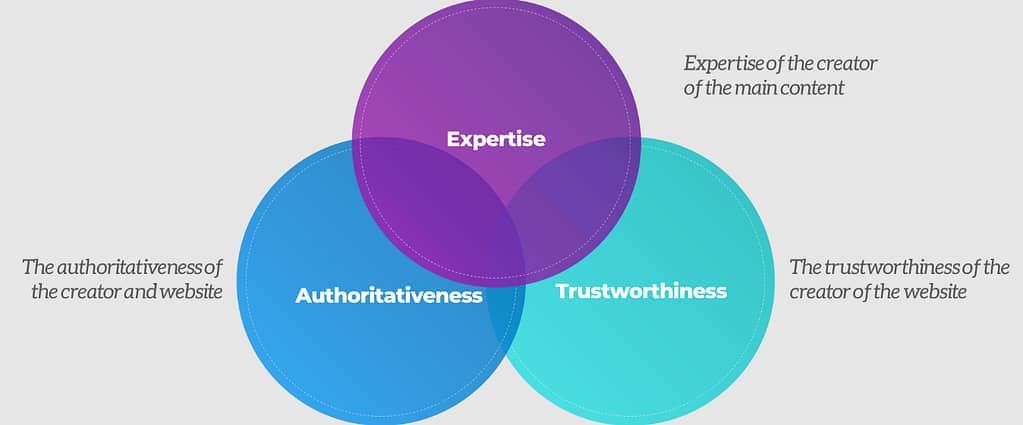
In addition to the core updates, Google released a number of smaller algorithm changes in 2023, including:
- February 2023 product review update: This update was designed to improve the visibility of high-quality product reviews in search results.
- April 2023 review update: This update was designed to improve the ranking of helpful and informative reviews.
Get on top of Google’s algorithm with Gordon Digital!
Algorithm updates often have an impact on website rankings. Google is always searching for new ways to improve the search experience, and that can result in serious rankings shifts.
The official word from Google is that there’s no silver bullet for recovering from a core update. If there has been a change in your website’s traffic or rankings after an update, the best thing to do is to focus on creating quality content.
Been affected by Google’s algorithm updates in the past? Gordon Digital can help! Our SEO specialists are always up to date on what Google is doing. If your website has been affected by an update, we can design a strategy that gets you back on track.
Talk to us to find out more, or book in your strategy session to get started.

